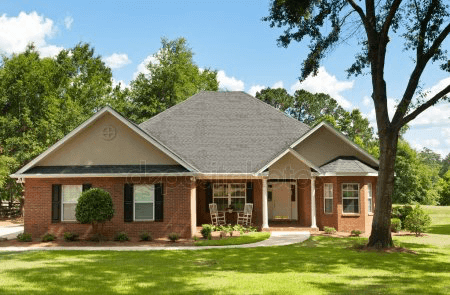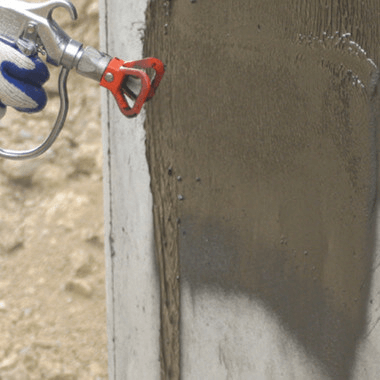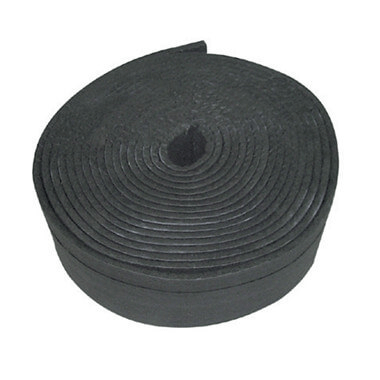
Water damage is one of the most invasive and difficult to control problems facing homeowners, but assuming that damp smell in your basement is just a fact of life opens you up to risk when the dampness finally becomes a puddle on the floor or water trickling down your walls.
The issue is that failing waterproofing around a foundation is difficult to detect until it’s too late. “Out of sight, out of mind” can lead to costly repairs, often at the worst time of year.
Proactively waterproofing your foundation can ultimately cost homeowners up to ten times less than digging up your foundation to fix a problem after it has happened. Making sure your home builder engages a waterproofing company will save you a lot of money in the long run.
Many homeowners—and even contractors—think that all they need is a waterproofing membrane applied to the concrete and they’re protected. And while a high-quality waterproofing membrane should be a key part of maintaining your home, the solution is actually more complex.
What Is Hydrostatic Pressure?

Before we talk about waterproofing products, let’s look at how homes are built, and why waterproofing is so important.
The first step in building a new home is digging a hole in the ground. Sounds pretty straightforward, right? In broad strokes, builders dig a foundation, pour concrete and then fill the rest of the hole back in.
The problem—and it’s a pretty universal one—occurs because the soil around the new foundation is less compacted than the untouched soil around that. As water moves through the ground, it will look for the path of least resistance—namely, through looser soil—before it ultimately accumulates against your home’s foundation. This is called hydrostatic pressure.
It’s important to understand that hydrostatic pressure exists in all soil types. All soil traps at least some moisture, so even if you’re living in a relatively dry place, homeowners should still make sure their home is built to withstand hydrostatic pressure.
But My Foundation Is Already Waterproofed?

Many homeowners see the edge of the black membrane peeking over the grade-line of their home and assume they’re protected. While a quality waterproofing membrane is critical in keeping your home waterproof, if it’s under continual assault from hydrostatic pressure, it will not last as long as it would if the whole foundation is well-protected.
A waterproofing membrane shouldn’t be your first line of defense. Products like drainage mats are designed to help water drain safely away before they ever reach the foundation.
What Is a Drainage Mat?

A drainage board, or drainage mat, helps water flow away from the foundation. Without it, water can stay trapped against the concrete or pool at the bottom. Drainage mats come with a dimpled design that lets water accumulate and flow away, creating an air gap.
Good drainage mats will also have a Polypropylene Geotextile Fabric. As water flows, it picks up small particles of silt and soil. When water stops moving—like when it reaches a concrete wall—silt and soil will accumulate, further increasing the pressure against the foundation. A drainage mat’s membrane protects the mat from sediment clogging.
What Other Features Can You Use With a Drainage Mat?
Home waterproofing needs a comprehensive solution. Along with using both drainage mats and waterproofing membranes, here are a few other waterproofing products to consider:
Drainage Tiles and Drainage Rolls

Once the water has flowed down the drainage mat, what happens next? It’s not enough to keep it off the walls—you need the water to move away entirely from your home or else you risk it coming up through the basement floor.
Traditionally, the solution has been to install something called a French drain, which is a concrete pipe that collects water and helps it flow away from your foundation. Unfortunately, French drains are notorious for getting clogged or collapsing, which, in turn, only makes your drainage problem worse as water backs up.
Drain tiles and drainage rolls work on the same kind of principle as drainage mats, creating channels that allow water to flow, and using a membrane to protect the system from soil and gravel. They are placed at the base of drainage boards and can be used to channel water downgrade or to a mechanical drainage system, like a sump pump.
Insulated Drainage Mat
A drainage mat creates an air gap to facilitate water flow, which is great. But in colder climates, that air gap can also trap warm air from an improperly insulated basement. And that warm air results in a thin layer of liquid water against your foundation, even when the ground is frozen.
An insulated drainage mat does double duty. It provides the hydrostatic pressure protection that comes with any good drainage mat, while also offering insulation R-value that keeps warm air in your basement. This, in turn, saves you not only from costly water damage repairs but also lowers monthly energy expenses.
When looking for an insulated drainage mat, make sure you’re looking not only at its insulation properties but also at its compressive strength. Not all insulation is designed to withstand the external forces of soil and water, so when selecting your drainage board, make sure your insulation is made to last.
Build Your Waterproof Home
Proactively waterproofing your home protects your investment and saves you money for years to come. By educating yourself, you can rest easy that your home is safe from the invasive force of water. Using a comprehensive waterproofing system, including drainage mats, will help keep the water out, so you can enjoy every level of your dry home, every day.
For more information on choosing the right waterproofing products, visit the Mar-flex website.
